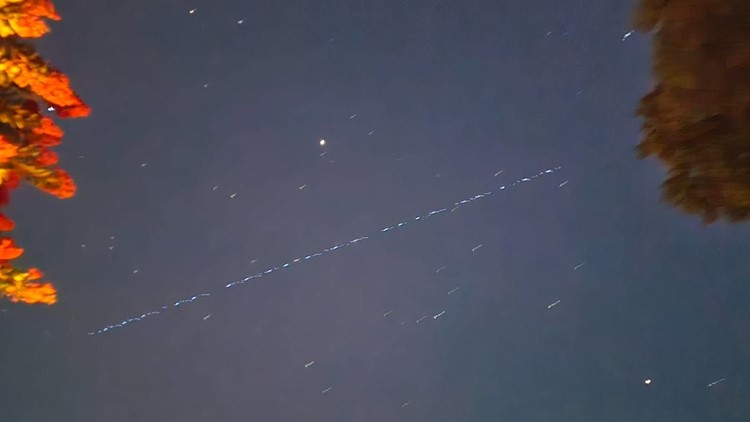PENNSYLVANIA, USA — Have you ever looked up and saw what looked like a glowing worm inching its way across the sky? Did you think you saw a UFO?
We receive many calls into our station here at WNEP about the Starlink Satellite Train, which, given the right positioning and visibility, can cause quite a stir among our viewers.
"Starlink" is a network of satellites orbiting Earth a few hundred miles above the surface, which provide low-cost broadband internet and communications coverage to the entire planet, including remote regions. Starlink currently provides coverage to over 2 and a half million customers.
The satellites were developed by private company SpaceX, owned by Elon Musk. The first Starlink satellites were launched in May 2019, and as of March 2024, several thousand comprise the constellation. SpaceX aims to eventually maintain a "megaconstellation" of 42,000 Starlink satellites into our skies. All Starlink satellites launched since 2021 have been equipped with laser crosslinks, which allows the satellites to communicate between each other, relaying data and signals in space, rather than on the ground, thereby reducing reliance on ground stations.
Starlink satellites are launched in batches of about 20 to nearly 60. They initially orbit close together, before spacing out over time, and settling into their own orbits. When the solar arrays and bus, or main body of the satellite, reflect light from the sun, the satellite "train" can be seen for several minutes overhead. They orbit the Earth once every 90 minutes, and can sometimes be viewed again within 2 hours of a previous sighting if they catch the sunlight the same way.
Since their inception, there have been several versions of the satellite, and the latest version weighs approximately 2,000 pounds, about 3 times heavier than the first generation of Starlink. The actual Starlink satellites range from the size of a table, to the size of a mid-sized sedan, not including the reflective solar panel used to generate power. When unfurled, those solar arrays have a wingspan of approximately 100 feet. Satellites in the Starlink fleet are deorbited after approximately 5 years.
Curious as to where the name "Starlink" comes from? SpaceX CEO explained in a tweet that the name was inspired by the 2012 novel "The Fault in Our Stars," written by John Green.
To see when the next viewing for a flyover is possible, CLICK HERE.
Enter your country and location, then click "FIND VISIBLE TIMES." Possible sightings are sorted into "good," "average," and "poor" visibility likelihoods based on projected apparent "brightness" of the satellites. (Remember, these satellites do not produce their own light; they reflect light from the sun.)


